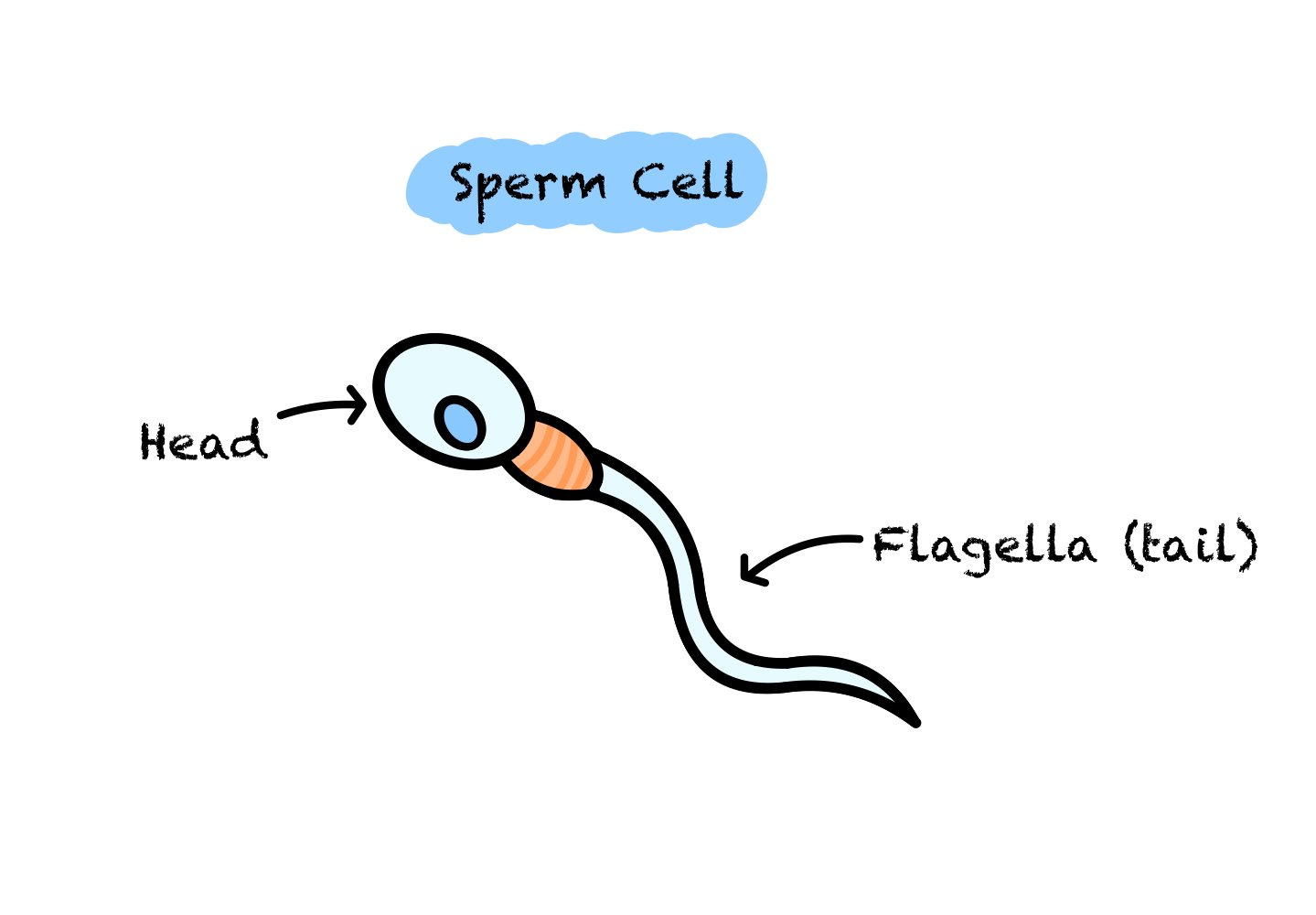Reproduction
A thing can create another thing out of things basically invisible to the human eye, isn’t that insane?!
Reproduction is absolutely fascinating and an insanely important topic to cover, both for learning about the living world around us and for understanding our own health.
Sexual Reproduction
As mentioned in the cell division section: body cells have a diploid chromosome compliment.
The cells used for sexual reproduction, sperm and egg cells, are called gametes.
These gametes have 23 chromosomes rather than 46 and, as they only have one set of chromosomes, they are said to be haploid.
Sexual reproduction happens when two haploid cells, sperm and egg, fuse together to make one diploid zygote. This diploid zygote divides, it creates an embryo, which further develops to become a new organism.
Male Gamete Production
Male animals have sperm cells. These are the male gametes.
These are created in the testes in humans. During sexual intercourse, they travel through the sperm duct, out through the urethra and into the vagina, travelling towards the egg cell.
Sperm cells require a lot of energy in this process to be able to swim towards the egg, and so have a large amount of mitochondria and a tail.
Female Gamete Production
The female gamete is the egg cell (or ovum).
It is created in the ovaries and travels through the oviducts, where it implants into the wall and waits for a sperm cell to fertilise it.
Sperm cells reach the oviduct by swimming up through the vagina and uterus.
Egg cells are much larger than sperm cells.
Sites of Gamete Production in Plants
Plants need to reproduce too. In flowering plants, the both female and male sex organs can be found on the same plant.
On a flowering plant, the anthers produce the male gametes, which are pollen grains. The ovary is located at the bottom of the flowering plant, and is where the female gamete is created, which is called the ovule.
Key Points!
-
Sexual Reproduction
The cells used for sexual reproduction, sperm and egg cells, are called gametes.
These gametes have 23 chromosomes rather than 46 and, as they only have one set of chromosomes, they are said to be haploid.
Sexual reproduction happens when two haploid cells, sperm and egg, fuse together to make one diploid zygote. This diploid zygote divides, it creates an embryo, which further develops to become a new organism.
-
Gametes
Male animals have sperm cells. These are the male gametes.
These are created in the testes in humans. During sexual intercourse, they travel through the sperm duct, out through the urethra and into the vagina, travelling towards the egg cell.
The female gamete is the egg cell (or ovum).
It is created in the ovaries and travels through the oviducts, where it implants into the wall and waits for a sperm cell to fertilise it.
Sperm cells reach the oviduct by swimming up through the vagina and uterus.
-
Gamete Production in Plants
Plants need to reproduce too. In flowering plants, the both female and male sex organs can be found on the same plant.
On a flowering plant, the anthers produce the male gametes, which are pollen grains. The ovary is located at the bottom of the flowering plant, and is where the female gamete is created, which is called the ovule.




